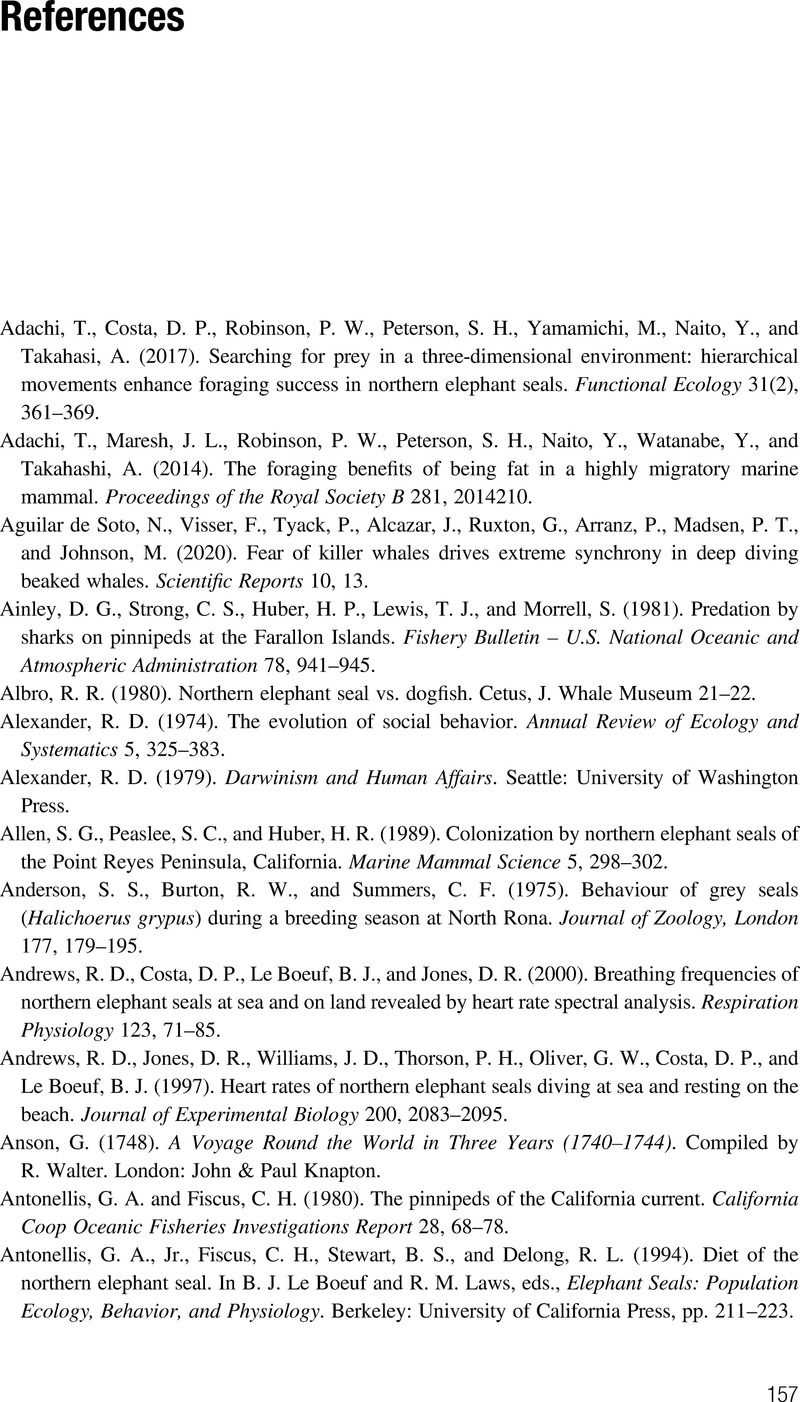Book contents
- Elephant Seals
- Elephant Seals
- Copyright page
- Contents
- Preface
- Acknowledgments
- 1 Origins, Misnomers, and Bottleneck
- 2 Back from the Abyss, Population Recovery, and Genetic Aftermath
- 3 The Year of the Seal
- 4 Fieldwork 101
- 5 Adapting to Life at Sea and on Land
- 6 The Cost of Living in a Seal Harem
- 7 Coito Ergo Sum
- 8 Females
- 9 Diving, Foraging, and Migration
- 10 Development
- 11 Sleep When You Can
- 12 What Is All the Noise About?
- 13 Comparisons, Unsolved Mysteries, and Conclusions
- References
- Index
- Plate Section (PDF Only)
- References
References
Published online by Cambridge University Press: 23 September 2021
- Elephant Seals
- Elephant Seals
- Copyright page
- Contents
- Preface
- Acknowledgments
- 1 Origins, Misnomers, and Bottleneck
- 2 Back from the Abyss, Population Recovery, and Genetic Aftermath
- 3 The Year of the Seal
- 4 Fieldwork 101
- 5 Adapting to Life at Sea and on Land
- 6 The Cost of Living in a Seal Harem
- 7 Coito Ergo Sum
- 8 Females
- 9 Diving, Foraging, and Migration
- 10 Development
- 11 Sleep When You Can
- 12 What Is All the Noise About?
- 13 Comparisons, Unsolved Mysteries, and Conclusions
- References
- Index
- Plate Section (PDF Only)
- References
Summary

- Type
- Chapter
- Information
- Elephant SealsPushing the Limits on Land and at Sea, pp. 157 - 180Publisher: Cambridge University PressPrint publication year: 2021

